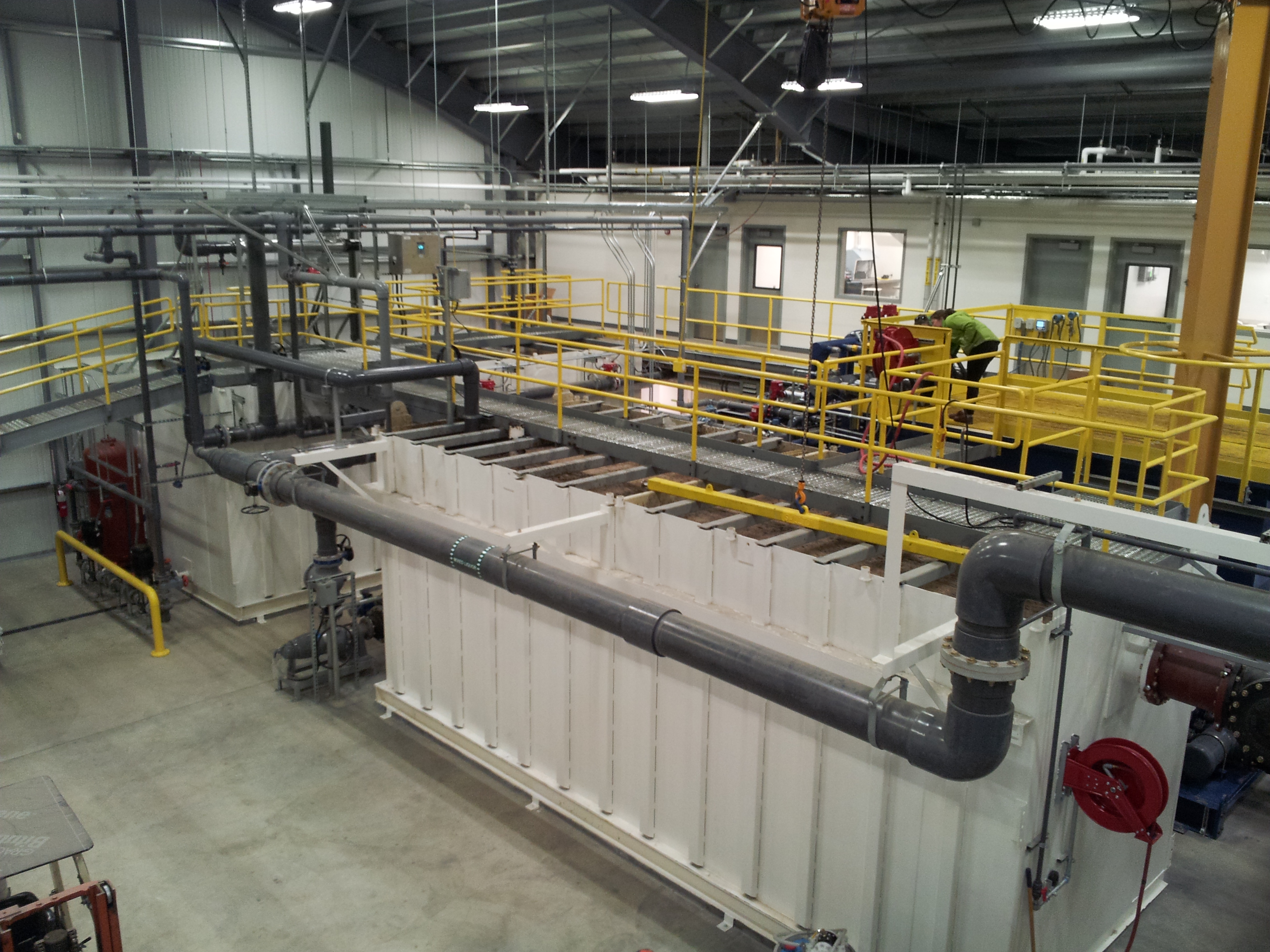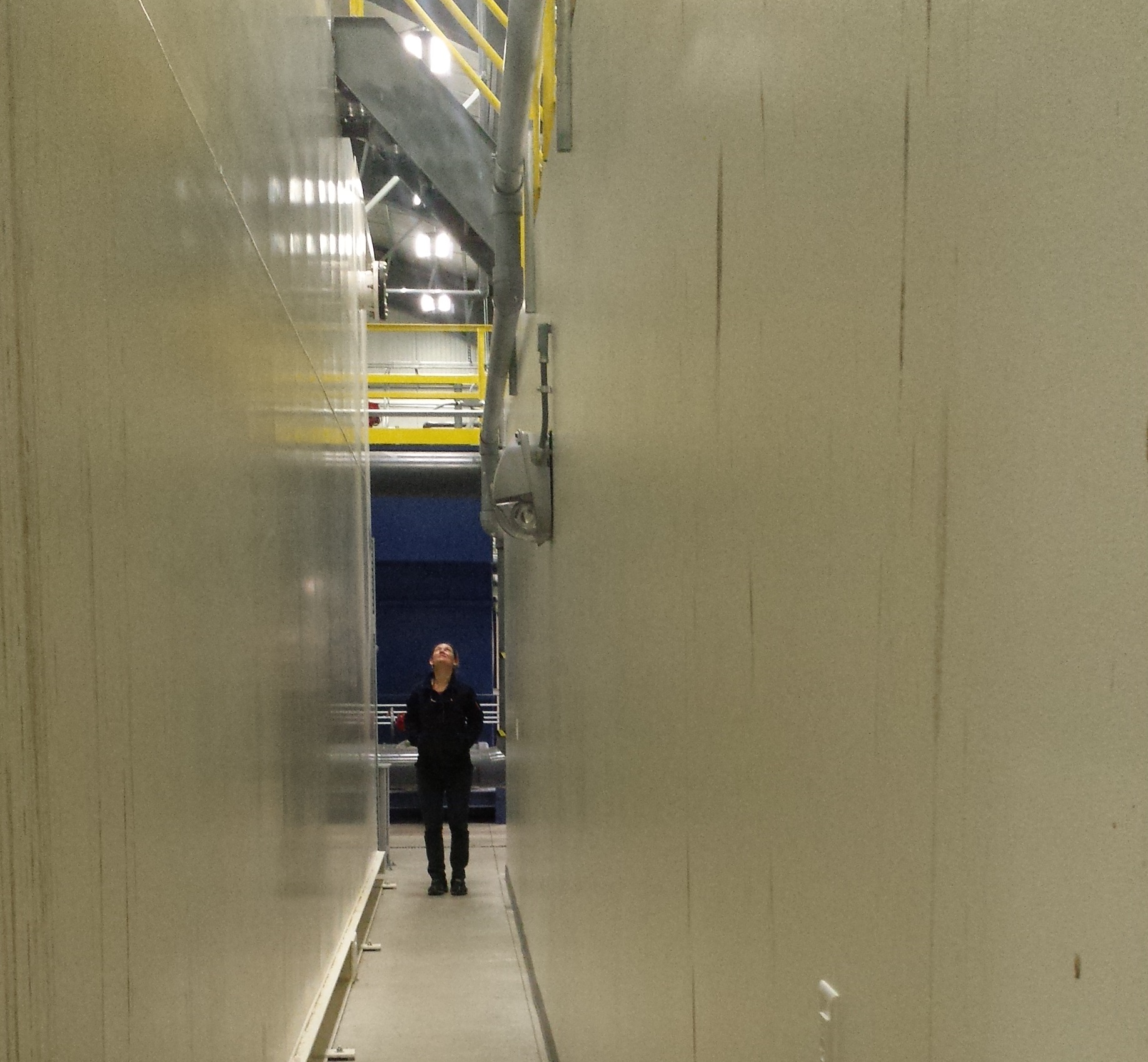Holland America Princess Denali Canyon Lodge Wastewater Treatment Plant

 The existing WWTP served 190 room and had a nameplate capacity of 19,500 gallons per day (gpd). It was permitted for 35,000 gpd and usually ran between 25,000 to 35,000 gpd. The plant had been designed to be expanded to 84,500 gpd capacity. The existing building was large enough to accommodate additional equipment, but it would need to be expanded in order to meet the maximum anticipated capacity.
The existing WWTP served 190 room and had a nameplate capacity of 19,500 gallons per day (gpd). It was permitted for 35,000 gpd and usually ran between 25,000 to 35,000 gpd. The plant had been designed to be expanded to 84,500 gpd capacity. The existing building was large enough to accommodate additional equipment, but it would need to be expanded in order to meet the maximum anticipated capacity.
The WWTP needed to be able to serve a total of 555 rooms, restaurants, and laundry for the 555 rooms and an additional 675 rooms. All of this capacity was needed by the 2014 tourism season. This demand, with a safety factor of 1.33, was approximately 175,000 gpd. The existing WWTP expansion was limited to 84,500 gpd, so a new WWTP was required. GVJ&A determined that a Membrane Bioreactor (MBR) process would be most suitable for this application. This process allowed the project to minimize building construction. The most space consuming portions of the design were flow equalization basins and large volume aeration tanks. The MBR units were the most expensive portion of the system. In order to save some capital expense, only one MBR unit was installed for the 2014 operating system, although the rest of the process was installed at full capacity equipment sizes. This allows for the Owner to simply purchase and install another MBR unit in order to meet the majority of anticipated future demands. If future demands exceed 250,000 gpd, additional aeration and equalization volume will be required, which will require a building extension.

Due to the varied flows expected from the hotel rooms, mostly early in the morning and late in the evening with minimal flow during the day, large equalization basins are needed to allow for a constant flow rate through the plant. The design includes 2 equalization basins, a total of about 100,000 gallons, which have some aeration to keep the stored raw sewage from becoming anoxic. The raw sewage is screened through a drum screen with a 2 mm perforated screen. The screenings feed a screenings compactor which discards the compacted screenings into a dumpster. The equalization basins feed into the aeration basins. The aeration basins are divided into 3 equal aeration zones, with different dissolved oxygen set points. In addition to screened, equalized sewage, the mixed liquor (ML) recycle also feeds the aeration basin. The ML is rescreened through a drum screen with 0.010” wedge wire slots. This drum screen has a screenings compactor the same as the one for the raw sewage screenings. The effluent from the aeration basins feeds into MBR basins. Scum from the equalization and aeration basins is sent to separate scum sumps and into the waste activated sludge tanks.
 The MBR equipment used for this system is the SIEMENS (now EVOQUA) MemStation 96. A single membrane operating system was installed for this project, but there is floor space for a second. This equipment has 96 membrane modules that can handle 14.7 gallons per day per square foot. At 10 degrees Celsius (50 degrees Fahrenheit) the average flow rate is 193,100 gallons per day. The equipment is designed to produce effluent with a total suspended solids concentration of less than 5 mg/L and a turbidity of less than 0.2 NTU. The MemStation requires air for scouring the membranes to keep matter from agglomerating. The equipment is programmed to automatically switch between tanks and run the various modes of operation for the required duration. For a typical MBR, these modes are filtration, relaxation, maintenance wash, chlorine clean-in-place, and citric acid clean-in-place. The clean-in-place modes are at intervals of 90 and 180 days, respectively and require about 8.5 hours each to complete. The relaxation mode occurs every 12 minutes, but only lasts for 1 minute. A maintenance wash is completed every 7 days and lasts 50 minutes. At all other times, the MBR can be run in filtration mode. The clean-in-place modes will be run during low flow times in order to minimize the impact on the system production.
The MBR equipment used for this system is the SIEMENS (now EVOQUA) MemStation 96. A single membrane operating system was installed for this project, but there is floor space for a second. This equipment has 96 membrane modules that can handle 14.7 gallons per day per square foot. At 10 degrees Celsius (50 degrees Fahrenheit) the average flow rate is 193,100 gallons per day. The equipment is designed to produce effluent with a total suspended solids concentration of less than 5 mg/L and a turbidity of less than 0.2 NTU. The MemStation requires air for scouring the membranes to keep matter from agglomerating. The equipment is programmed to automatically switch between tanks and run the various modes of operation for the required duration. For a typical MBR, these modes are filtration, relaxation, maintenance wash, chlorine clean-in-place, and citric acid clean-in-place. The clean-in-place modes are at intervals of 90 and 180 days, respectively and require about 8.5 hours each to complete. The relaxation mode occurs every 12 minutes, but only lasts for 1 minute. A maintenance wash is completed every 7 days and lasts 50 minutes. At all other times, the MBR can be run in filtration mode. The clean-in-place modes will be run during low flow times in order to minimize the impact on the system production.
The filtrate from the membrane operating system is disinfected using UV disinfection. The equipment installed is a TrojanUVFIT. This equipment has four lamps and is capable of treating flows through phase two of the potential upgrades. UV disinfection is favorable in remote locations because it can replace chlorination, meaning that less hazardous chemicals need to be shipped. UV disinfection reliable achieves the required log removal of organisms like Giardia, although it requires a significant increase in power to achieve significant log removal of viruses. For this project, Trojan designed the system to achieve the discharge limit set by the State of Alaska at a minimum UV transmission value of 72%. The maintenance parts on a UV disinfection reactor are typically the lamps, which are guaranteed for a set number of hours; the sleeves, which can be damaged by grit or occluded by fouling; the wiper system, which can fail mechanically but should also be checked to make sure the wiper elements are functioning; the VU intensity instrument, which must be calibrated regularly; and the lamp ballasts, which are guaranteed for a certain length of time.
The overflow from the membrane tanks is sent to the mixed liquor wet well and recycled to the aeration basin through the mixed liquor recycle screen. When the total suspended solids of the mixed liquor wet well reaches a certain value, the mixed liquor is pumped to the waste activated sludge tanks instead of being recycled. The waste activated sludge tank also receives waste from the various sumps in the plant: plant drain, scum, and slop. These sumps receive waste from the screenings compactors, centrifuge, spent CIP from the cleaning processes, and scum skimmers. The high total suspended solids sludge is sent to the centrifuge. The dewatered cake produced by the centrifuge is disposed of at a landfill.
The centrifuge is an ANDRITZ D3LL decanter centrifuge. It is capable of processing 85 gpm of waste activated sludge. The capture rate of total suspended solids is 95 percent. The unit is typically operated only a few hours each day. Polymer is dosed into the sludge to improve the quality of the cake. The system has been running successfully for two seasons.
